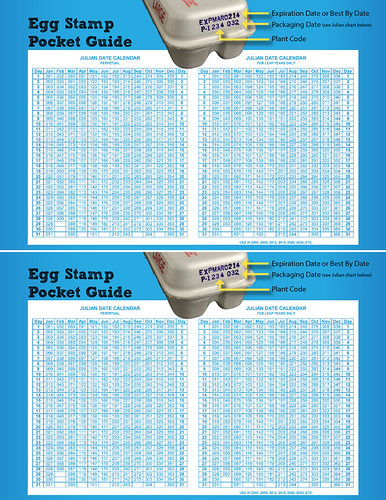
The holiday season is a busy time of year for bakers and chefs. From egg nog and cookie exchanges to fruit cakes and meringue pies, increased baking and gift-giving means you’ll need to know just what to look for when you buy one of your key ingredients…eggs. When shopping for eggs, consumers should look for the USDA Grade shield, for the ultimate assurance of quality. For best results for pastries and baked goods, pay attention to the freshness of your eggs.
USDA grading of shell eggs is a voluntary service paid for by shell egg producers. Eggs sold to consumers must be labeled with a grade. Eggs that are not labeled with a USDA Grade Shield have not been officially graded by USDA standards. Only eggs meeting strict USDA standards are allowed to be marketed with the USDA Grade Shield on the package. Egg packers who do not use the USDA grading service may put terms such as “Grade AA” or “Grade A” on their cartons, but they may not use the USDA Grade Shield.
As an independent third party, the USDA is recognized in the U.S. and around the world for assuring that eggs meet the U.S. grade standards for quality and sanitary processing. Licensed graders from the USDA’s Agricultural Marketing Service evaluate plant sanitation, processing procedures, egg quality, egg weights and product storage temperatures on a continuous basis throughout the production day.
Egg quality is determined by evaluating each egg for interior and exterior factors. Selected samples of eggs are “candled” under a bright light allowing the USDA grader to see the contents of the egg as well as any external defects. During the candling process, eggs are categorized into one of three consumer grades. Grade AA and Grade A eggs are most commonly found in retail grocery outlets.
Grade AA - The freshest and highest quality eggs will receive a Grade AA.
Grade A - Very high quality eggs will receive a Grade A.
Grade B – Grade B eggs are usually used for breaking stock (liquid eggs) and baking.
Bakers and chefs should keep a few tips in mind to ensure success this holiday season:
- For general baking purposes, older eggs are fine to use.
- For recipes where you will be whipping the egg whites, the freshest eggs are preferred and will result in fluffier baked goods, due to the firm, thick texture of the whites.
- Bakers should refrain from taste-testing unbaked cookie dough during preparation. Egg-containing foods should be thoroughly cooked before eating.
- When preparing egg-containing foods such as ice cream, egg nog, or sauces such as hollandaise or béarnaise, only use recipes that begin with a cooked, stirred custard that registers 160° on a food thermometer.
By understanding the coding on the egg cartons, chefs and bakers can determine the freshness of the eggs. Each carton of USDA graded eggs must show the date of packaging, the processing plant number, and may include an expiration date. USDA assures that all labeling and claims made on the carton are truthful and accurate. To determine freshness, a Julian date or pack-date calendar can be used. This three-digit code indicates the date of packaging, starting with January 1 as 001 and ending with December 31 as 365. These numbers represent the consecutive days of the year. You can store fresh shell eggs in their cartons in the refrigerator for four to five weeks beyond this date.
As you make your shopping list for the supermarket, remember to purchase fresh USDA graded eggs and your culinary treats will be the hit of the party.

